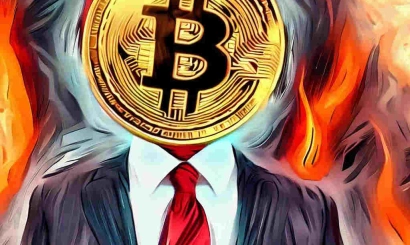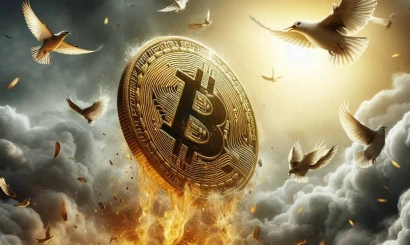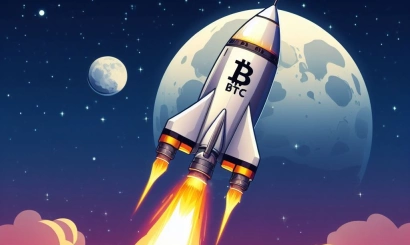Bitcoin with memes. How new tokens shaped a Multimillion-dollar Market
We tell you how BRC-20 tokens appeared on top of Bitcoin, and why trading in new memcoins led to a record increase in commissions and market shifts
A new kind of token has appeared in the Bitcoin blockchain, around which there has been a serious speculative frenzy. Most of these tokens are so-called memcoins, named after famous memes and carrying no utility or functionality. Despite this, they have cumulatively risen in price by tens of thousands of percent in a few weeks and triggered a record increase in intra-network transfer fees for the first cryptocurrency.
The new mania around memcoins began with the PEPE coin. Anonymous developers launched it in April, and speculators inflated its capitalization to a billion dollars in just three weeks of its existence.
What is PEPE cryptocurrency and how it set the trend for new memcoins
Interest in memcoins created in the Bitcoin blockchain is spilling over from more familiar token-creating networks like Ethereum or Solana. The excitement has swelled to the point where the volume of trading in Bitcoin Frogs collection tokens (the equivalent of bitcoin token format NFTs) from May 17 to 18 exceeded that of the main blue-chip NFT market, the Bored Ape Yacht Club (BAYC) collection.
New standard.
The tokens standard, dubbed BRC-20 (similar to Ethereum's ERC-20), are digital assets that can be created and transferred in the bitcoin blockchain using the Ordinals protocol. This standard allows data to be written in satoshi, the smallest bitcoin unit, and turned into tokens.
The Ordinals protocol has enabled the growth of memcoins placed on the bitcoin blockchain but without any utility. Instead, traders bought them up solely for speculative purposes. Tens of thousands of BRC-20 tokens have been issued since the protocol was introduced in March, with a combined market capitalization of more than $1 billion. The ORDI memcoin, which refers to the Ordinals protocol but is probably unrelated to its developers, is the largest at the time of publication with a capitalization of about $300 million.
Amid high demand, cryptocurrency exchange OKX announced the launch of its own marketplace for trading BRC-20 tokens, and Binance previously announced plans to add support for them on its NFT platform.
"The trend is shaping the market," commented 0xprocessing co-founder Nikita Vassev, speculating on the scale of the hype. He notes that the entire current capitalization of new tokens in the bitcoin network is essentially occupied by single memcoins, and the Ordinals protocol itself has severely limited functionality compared to Ethereum's ERC-20 application capabilities.
"But BRC-20 could be a long-shot story if money from major venture capital funds now flows into teams that focus on building bitcoin infrastructure solutions (wallets, bridges, credit protocols, etc.). We should also remember that this adds to the attractiveness of bitcoin itself," the expert adds.
High commissions
The result of the growing demand for memcoins was a rapid jump in fees for bitcoin transactions and the formation of a queue of unconfirmed transactions. Transactions related to BRC-20 flooded the network and caused a high load on it, causing the commissions paid to miners to reach the highest level since April 2021. Since the beginning of May, the average commissions have risen about 1,500% to $31 per simple coin transfer.
When bitcoin's transaction blocks are full, the transactions with the highest fees are confirmed first. The pending transactions are in what is known as a mempool, waiting to be confirmed. If under the adequate load on the network, transfers are confirmed in no more than 10 minutes on average, in this abnormal scenario it is possible to wait up to several hours for a transfer to be confirmed, unless it is sent with an inflated fee.
Bitcoin's pool of unconfirmed transactions soared from about 10,000 transactions to more than 350,000 transactions, triggering a rise in fees globally. But it turned out to be a lucky scenario for miners, whose income increased markedly.
In total, there were more than 4 million BRC-20 transactions in May, representing 60% of all bitcoin transactions. For the first time in many years, a block of bitcoin transactions exceeded the fixed fee of the miner (6.25 BTC) who mined that block. This was due to the high demand for space in the blockchain, which was triggered by transactions involving the transfer or issuance of BRC-20 tokens.
"Miners' income peaked on May 8. It was $41.7 million per day, including $17.7 million from transaction fees. Now the income of miners fell to $27.6 million. Income from transaction processing fell to $2.4 million. The cost of commission increased due to a sharp increase in unconfirmed transactions in the mempool. The more of them, the more users are willing to pay for their further processing by miners. Because of this, Binance was forced to disable BTC withdrawals from the trading platform twice in one day," summarizes the situation, Vladislav Antonov, financial analyst at BitRiver mining company.
"The situation is not normal," Antonov believes. Some bitcoin developers have expressed dissatisfaction with the high commissions and said they would fight such tokens. Miners, on the contrary, benefit from the development of this standard, bringing them more income from commissions. But, on the other hand, blockchain congestion will reduce bitcoin's popularity. We need to look for a solution that will satisfy investors and miners, the expert added.
Implications and solutions
BRC-20 tokens reflect the process of possible future experiments in the bitcoin ecosystem. Even if memcoins end up being a passing fad of the cryptocurrency community, they are already having a tangible effect. It may turn out that memcoins will push developers to further experiment at the base level of bitcoin, leading to new scenarios for its use and new sources of demand for space within transaction blocks. This, in turn, could lead to more sustainable commission growth.
The commission market is critical to the existence and security of the bitcoin network, as they will need to compensate miners for the diminishing reward per block during subsequent halving cycles originally embedded in the cryptocurrency's software code in the future.
Rising transaction fees could also force leading cryptoservices to use "second-tier" technology to reduce costs. When a surge in fees forced the Binance exchange to temporarily suspend bitcoin withdrawals, its head, Changpeng Zhao, wrote on social media that he was considering adding Lightning Network support to the exchange. This is a fairly well-known, but not yet widespread, second-tier payment protocol built on top of bitcoin and designed for much faster and cheaper transfers.
"The assessment of the consequences of the popularity of BRC-20 tokens varies depending on who is voicing it," Vassev reasoned. "Miners, of course, are happy, as their profitability has increased because of the load on the network. But ordinary users are definitely not used to paying a commission and still getting in a huge queue. That's why big market players are thinking about integrating the Lighting Network, but it also takes time."
Tokens without apps
The popularity of the new tokens has led to the appearance of counterparts in the blockchains of other cryptocurrencies, such as Litecoin (LTC) and Dogecoin (DOGE). The latter caused the number of transactions in the network to rise to a historic high on May 16. According to Vassev, such experiments can materialize into something substantial only if there are interested development teams who will develop the internal ecosystem.
It is important to note that BRC-20 tokens do not allow bitcoin to compete with Ethereum as a platform for smart contracts, especially at the basic level. A dynamic ecosystem of decentralized applications is deployed on the Ethereum blockchain, including credit protocols, NFT, games, social networks and other Web3 applications. Developers can create them using the Solidity programming language, which enables a wide range of functions and program logic. Bitcoin's underlying code doesn't come close to having those capabilities.
Some traders have been able to make high profits trading memcoins, but rank-and-file market participants should be cautious. Historically, memcoins have shown high volatility and low liquidity, and their prices often show only a decline after a collapse from their peak during the rush.
Perhaps in the future bitcoin blockchain infrastructure projects will open up investment opportunities. But high fees will certainly remain a stumbling block, especially when the crypto market is bullish.
- Bloomberg reports growing faith in Bitcoin among investors who fear default
- Musk's advanced LADYS token brought its 10 largest holders $20 million in profits
- EU adopts common rules for all countries to regulate cryptocurrencies
- Conflux rises 14% after news of blockchain sim card launch
- Jump Trading earned more than $1 billion for supporting the TerraUSD token rate
- U.S. exchange regulator asks court to dismiss Coinbase lawsuit
- Hackers stole $15 million in cryptocurrencies through a fake cryptocurrency exchange website






